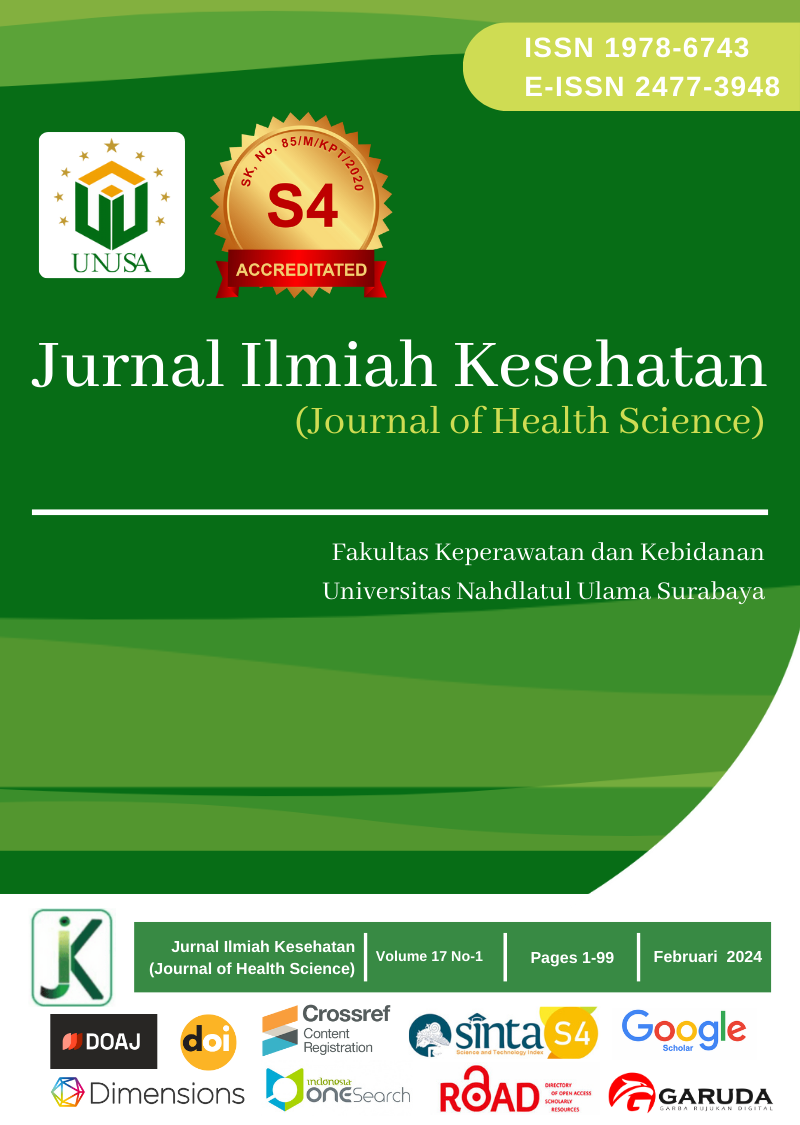The Effect of Fermentation Time and Mass Variation of Saccharomyces Cerevisiae on The Characteristics of Virgin Coconut Oil from The Coconut Milk Fermentation Process
Main Article Content
Abstract
Virgin coconut oil is one of the processed coconut products that has many benefits. Virgin coconut oil can be produced through extraction, centrifugation, and fermentation processes. In this study, virgin coconut oil was made by fermentation using baker's yeast (Saccharomyces cerevisiae). This study aims to determine the effect of fermentation time and mass variation of Saccharomyces cerevisiae used on the characteristics of virgin coconut oil produced. The process of making virgin coconut oil in this study is to separate skimmed water from coconut milk. Skimmed steering is mixed with Saccharomyces cerevisiae with variations of 0, 1, 1.5, and 2 grams, with fermentation durations of 12, 18 and 24 hours. The resulting virgin coconut oil is then analyzed to determine the iodine, peroxide, and acid numbers. From the results of the study, it is known that there is no relationship between the duration of fermentation and the mass of yeast Saccharomyces cerevisiae in the manufacture of virgin coconut oil from coconut milk against iodine number. The peroxide number for all variables of fermentation duration and yeast mass is 2 meq/kg. The acid number tends to increase with the length of fermentation, with the highest value being 0.6% at 24 hours fermentation time and the yeast mass of Saccharomyces cerevisiae 1.5 grams.
Downloads
Article Details
Copyright (c) 2024 Alva Cherry mustamu, Evawanti A. Warsito

This work is licensed under a Creative Commons Attribution-ShareAlike 4.0 International License.
References
Andaka, G., & Sentani, A. (2016). Pengambilan Minyak Kelapa Dengan Metode Fermentasi
Menggunakan Ragi Roti. Jurnal Teknik Kimia, 10(2), 65–70.
C.C. Kusuma, Y., Mayun Permana, I. D. G., & Timur Ina, P. (2022). Pengaruh Jenis Ragi dan Lama
Fermentasi terhadap Karakteristik Virgin Coconut Oil (VCO). Jurnal Ilmu Dan Teknologi Pangan
(ITEPA), 11(1), 74. https://doi.org/10.24843/itepa.2022.v11.i01.p08 DOI: https://doi.org/10.24843/itepa.2022.v11.i01.p08
da Silva Lima, R., & Block, J. M. (2019). Coconut oil: What do we really know about it so far? Food
Quality and Safety, 3(2), 61–72. https://doi.org/10.1093/fqsafe/fyz004 DOI: https://doi.org/10.1093/fqsafe/fyz004
Erika, C., Yunita, Y., & Arpi, N. (2014). Pemanfaatan Ragi Tapai dan Getah Buah Pepaya pada Ekstraksi Minyak Kelapa secara Fermentasi. Jurnal Teknologi Dan Industri Pertanian Indonesia, 6(1), 1–6.
https://doi.org/10.17969/jtipi.v6i1.1982 DOI: https://doi.org/10.17969/jtipi.v6i1.1982
Karouw, S., & Santosa, B. (2013). Minyak kelapa sebagai sumber asam lemak rantai medium. Pros Konf
Nas Kelapa VIII. Prosiding Konferensi Nasional Kelapa VIII, 73–78.
Khazalina, T. (2020). Saccharomyces cerevisiae in making halal products based on conventional
biotechnology and genetic engineering. Journal of Halal Product and Research, 3(2), 88.
https://doi.org/10.20473/jhpr.vol.3-issue.2.88-94 DOI: https://doi.org/10.20473/jhpr.vol.3-issue.2.88-94
Mujdalipah, S. (2016). Pengaruh Ragi Tradisional Indonesia Dalam Proses Fermentasi Santan Terhadap
Karakteristik Rendemen, Kadar Air, Dan Kadar Asam Lemak Bebas Virgin Coconut Oil (VCO).
Fortech, 1(1), 10–15. http://ejournal.upi.edu/index.php
Standar Nasional Indonesia : Cara Uji Minyak dan Lemak, (1998) (testimony of Badan Standardisasi
Nasional).
Patty, P. V. (2015). Pengaruh Lama Fermentasi Terhadap Ranciditas Minyak Kelapa Yang Diproduksi
Secara Tradisional. BIOPENDIX: Jurnal Biologi, Pendidikan Dan Terapan, 1(2), 146–152.
https://doi.org/10.30598/biopendixvol1issue2page146-152 DOI: https://doi.org/10.30598/biopendixvol1issue2page146-152
Pontoh, J. (2008). Kualitas Virgin Coconut Oil Dari Beberapa Metode Pembuatan. 1(1), 60–65.
https://doi.org/10.35799/cp.1.1.2008.28
Sherliana, S., Sitorus, I. M., Putri, N. P., Melati, A. R., & Putra, K. A. (2021). Pengaruh Penambahan
Massa Saccharomyces cerevisiae Terhadap Perolehan Minyak Kelapa Murni (Virgin Coconut Oil)
Dengan Metode Fermentasi. Jurnal Chemurgy, 5(2), 72. https://doi.org/10.30872/cmg.v5i2.6324 DOI: https://doi.org/10.30872/cmg.v5i2.6324
Sinurat, D. I., & Silaban, R. (2021). Analysis of the Quality of Used Cooking Oil Used in Frying
Chicken. Indonesian Journal of Chemical Science and Technology (IJCST), 4(1), 21.
https://doi.org/10.24114/ijcst.v4i1.23091 DOI: https://doi.org/10.24114/ijcst.v4i1.23091
Widjaja, W. P., & Anjarsari, B. (2014). OPTIMASI KONDISI FERMENTASI PADA PEMBUATAN
MINYAK KELAPA (Cocos nucifera L) DENGAN MENGGUNAKAN Saccharomyces
cerevisiae. Jurnal Agroteknologi, 8(01), 85–93.





